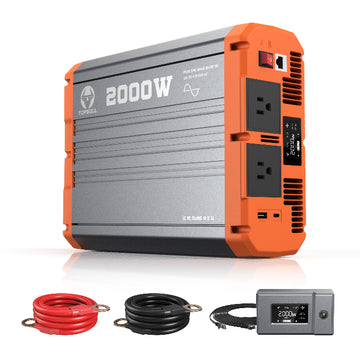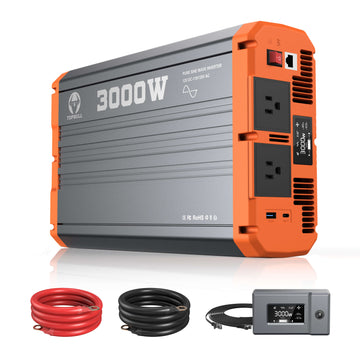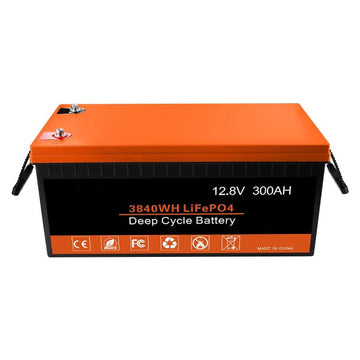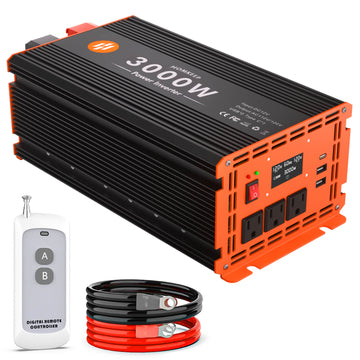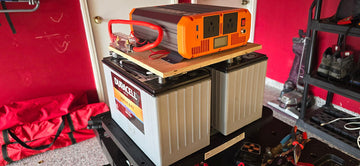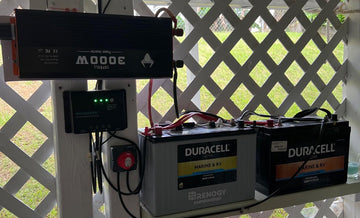The energy needs of schools, the cornerstone of social progress and the temple of knowledge dissemination, are growing with the abundance and expansion of educational activities. In the face of this trend, many forward-thinking educational organisations are actively seeking ways to transform themselves to reduce their dependence on fossil fuels and explore new ways to lower operating costs. Among them, solar power, a clean, renewable energy solution, is emerging as the preferred choice for school energy transitions. So how many solar panels are needed to power a school? In this article, we will delve into this question and figure out how many solar panels are needed for a school, as well as the benefits of solar panels and what to look for when installing them.
Analysing the electricity demand of a school
First of all, we need to know the specific size of the school, including the number of students, the number of staff and the floor area, etc. These data are the basis for assessing the electricity demand. In addition, a detailed list of the school's daily electricity consumption equipment, such as lighting system, air-conditioning system, teaching equipment, kitchen equipment, etc., should also be listed, and the average annual electricity consumption of the school should be counted or estimated.
School type and size
- Elementary, middle, and high schools: electricity needs are different for different types of schools. Typically, high schools may require more electricity because they have more laboratory equipment and activity spaces.
- Number of students: Generally speaking, the more students there are, the corresponding increase in the number of electrical equipment in classrooms, laboratories, dormitories, etc., which leads to an increase in electricity demand
- Building area: The building area of a school directly affects the arrangement and number of electrical equipment. Larger schools have more teaching buildings, libraries, gymnasiums and other facilities, all of which require electricity to support their normal operation.
Major Electricity Consuming Equipment
- Lighting: This is the largest portion of energy consumption in schools, especially in areas such as classrooms, corridors, and libraries.
- Air-conditioning and heating: Air-conditioning and heating systems also consume more energy in areas with hotter or colder climates.
- Computers and laboratory equipment: In modern education, computers and laboratory equipment also consume relatively more electricity.
- Other equipment: e.g. printers, sound systems
Estimation of Average Electricity Demand
- Students' electricity demand: Generally speaking, each student consumes about 1.5-3 kWh of electricity per day.
- Staff electricity demand: The average daily electricity consumption of staff is relatively high, usually between 4-6 kWh.
- Air conditioning and heating: this part of the electricity consumption may vary according to geographical differences, and the average annual consumption may also increase by 20-50 per cent.
Estimated Annual Electricity Consumption for Schools
According to the statistics, the average electricity consumption per student per day is about 1.5 kilowatt hours (kWh) and the average daily consumption of the staff is 5 kWh. using this, the daily electricity consumption for 500 students and 50 staff is:
500 x 1.5 + 50 x 5 = 750 + 250 = 1000 kWh/day
Assuming that the school is open 365 days a year, the annual electricity consumption is:
1000 kWh/day × 365 days = 365,000 kWh/year
Power generation capacity of solar panels
The impact of location on power generation
Schools located in sunny areas can achieve higher power generation efficiency. The amount of sunlight exposure varies significantly from region to region, and in general, effective sunlight exposure can range from 1,200 hours to 2,000 hours per year.
Calculating power output per unit area
Assuming that a 300W panel can generate 0.3 kWh per hour under optimal conditions. if the panel's annual power generation time is 1800 hours, the panel's annual power generation will be:
0.3kWh x 1800hours = 540kWh/year
Estimation of actual power generation
Considering factors such as weather and shadows, the actual power generation may be reduced by about 20%. Therefore, the actual power generation per panel is estimated as:
540kWh/year×0.8=432kWh/year
Calculating the number of solar panels required
We already know that the annual electricity demand for this school is 365,000 kWh. based on the actual generation of 432 kWh per panel per year, we can calculate the number of panels required: 365,000 /432≈847
Therefore, to power a school with 500 students and 50 staff, approximately 847 300W solar panels are required to meet the school's electricity needs.
Of course, the average power needs of a school are multi-faceted and usually vary depending on the size, location and type of equipment. The above calculations are only a rough estimate, and the exact power requirements need to be analysed in detail based on the actual situation.
Benefits of Installing Solar Panels for Schools
Installing solar panels has a number of significant benefits for schools. These benefits are not only in terms of financial benefits, but they also promote a number of aspects such as environmental protection and education. Here are some of the main benefits of installing solar panels in schools:
1. Economic benefits
- Lower electricity bills: solar panels can significantly reduce the cost of electricity in schools, especially in areas where electricity prices are high. The electricity generated can be used directly for the school's daily electricity consumption, reducing the need to buy electricity.
- Government subsidies and tax incentives: Many regions offer financial subsidies and tax breaks for installing solar power, which can be used by schools to obtain financial support and thus reduce initial investment costs.
- Net metering: If a school generates more solar power than it needs, the surplus can be fed back into the grid and the school can be compensated with additional electricity bills.
2. Environmental Protection
- Reduce carbon footprint: Solar energy is a clean and renewable resource, and installing solar panels helps reduce greenhouse gas emissions and mitigate the effects of global warming.
- Promote the popularity of renewable energy: As an educational institution, the installation of solar panels in schools can serve as a practical example to motivate students and other community members to pay attention to and adopt renewable energy.
3. Enhance School Image
- Green school image: Installing solar panels can enhance the image of the school as a pioneer in environmental protection and sustainable development in the community and the public, which has a positive effect on attracting students and donors.
- Attracting attention and sponsorship: Adopting green energy can help schools attract sponsorship from the community, corporations and the government, which can be utilised for the improvement of other educational resources.
4. Energy Autonomy
- Reducing reliance on conventional electricity: By generating their own electricity, schools can reduce their reliance on electricity suppliers to some extent and increase their energy autonomy, especially when electricity prices are volatile.
- Responding to power interruptions: In combination with an energy storage system, the use of solar panels can provide the school with a back-up power source in the event of a power interruption, increasing the resilience of the campus.
What are the requirements for solar panels for schools
When selecting and installing solar panels for schools, there are several important requirements and considerations to ensure their effectiveness, efficiency and long-term sustainability. Here are some of the key requirements for solar panels for schools:
1. Power generation capacity
- Power and efficiency: Choose solar panels with high power and good efficiency, e.g. monocrystalline silicon panels are usually more efficient than polycrystalline silicon panels and are suitable for schools with space constraints.
- Estimated annual power generation: Estimate the annual power generation based on the school's electricity demand to ensure that the solar system can meet the school's annual electricity consumption.
2. Durability and Reliability
- Wind and snow resistance: Considering the extreme weather, the solar panels should have good resistance to wind and snow loads.
- Warranty and durability: Choose a product that offers a warranty of up to 25 years or more to ensure stable performance over its lifetime.
3. Installation requirements
- Installation location: Select a roof suitable for south or slightly east/west facing to maximise sunlight reception. The roof should be free of shade (e.g. trees, buildings, etc.).
- Structural safety: Ensure that the roof structure can withstand the weight of the solar panels and the load of the mounting frame, and reinforce the structure if necessary.
4. System Design
- Inverter selection: The inverter is the key component for converting DC power into AC power. Choose an efficient and reliable inverter brand and make sure its capacity matches the output of the panels.
- Storage solution: Consider whether it is necessary to incorporate a battery storage system so that the stored power can be used when not generating electricity (e.g. at night or on cloudy days).
5. Economics
- Cost-benefit analysis: Consider the procurement cost of solar panels, installation costs, maintenance costs and expected savings in electricity bills to make an economic assessment.
- Subsidies and tax incentives: Understand the government's subsidy policy and tax incentives for solar projects to reduce initial investment costs.
FAQ
1. What is the cost of installing solar panels at a school?
The cost of installing solar panels varies depending on a number of factors, including the size of the system, the brand of equipment, the location of the installation, and local market conditions. In general, the installation of a medium-sized solar system (e.g., with a capacity between 50 kW and 200 kW) may require an investment of tens to hundreds of thousands of dollars. Although the initial investment is high, payback can usually be achieved within 5 to 10 years through electricity bill savings and government subsidies.
2. How can schools obtain government subsidies and tax incentives?
Schools can obtain government subsidies and tax incentives in the following ways:
- Researching local policies: Visit the official website of your local government or energy department to view available solar subsidies and tax credit programmes.
- Consult a professional: Contact a solar contractor or consultant, who usually has in-depth knowledge of the latest subsidy policies and can assist with applications.
- Application Procedure: Prepare the necessary documents and application materials according to local policies and submit the application as required.
3. How long do solar panels last?
Most solar panels have a lifespan of 25 years or more. Many manufacturers offer a 25-year performance warranty to ensure that the panels maintain a certain level of efficiency over their lifetime. Over time, the efficiency of the panels may gradually decrease, but they usually maintain approximately 80% of their generating capacity at the end of their useful life.
4. Is an environmental impact assessment required for schools?
In some cases, especially for large solar projects or in specific environmentally sensitive areas, schools may be required to conduct an Environmental Impact Assessment (EIA). The purpose of this assessment is to identify the potential environmental impacts of the project and to propose mitigation measures. Specific requirements depend on local regulations and schools should consult local environmental protection agencies for guidance.
5. Will the installation of solar panels have an impact on the day-to-day operations of the school?
A professional solar installation team will usually carry out the installation at a time that will have the least impact on the day-to-day operations of the school, such as during holidays or after school hours. While there may be some noise and worker activity during the installation, overall there will be no significant disruption to teaching and learning activities.
6. How can schools monitor and maintain solar panels?
Schools can monitor and maintain solar panels in the following ways:
- Monitoring systems: Many solar systems come with real-time monitoring software that tracks power generation performance and system status. Schools can review this data periodically to ensure that the system is functioning properly.
- Regular inspections: It is recommended that a professional maintenance inspection be conducted at least once a year, including cleaning the panels, checking electrical connections and inverter status to ensure the system is operating efficiently.
- Fault Reporting: If abnormal power generation is detected, schools should contact the installation company or maintenance service provider for inspection and repair.

